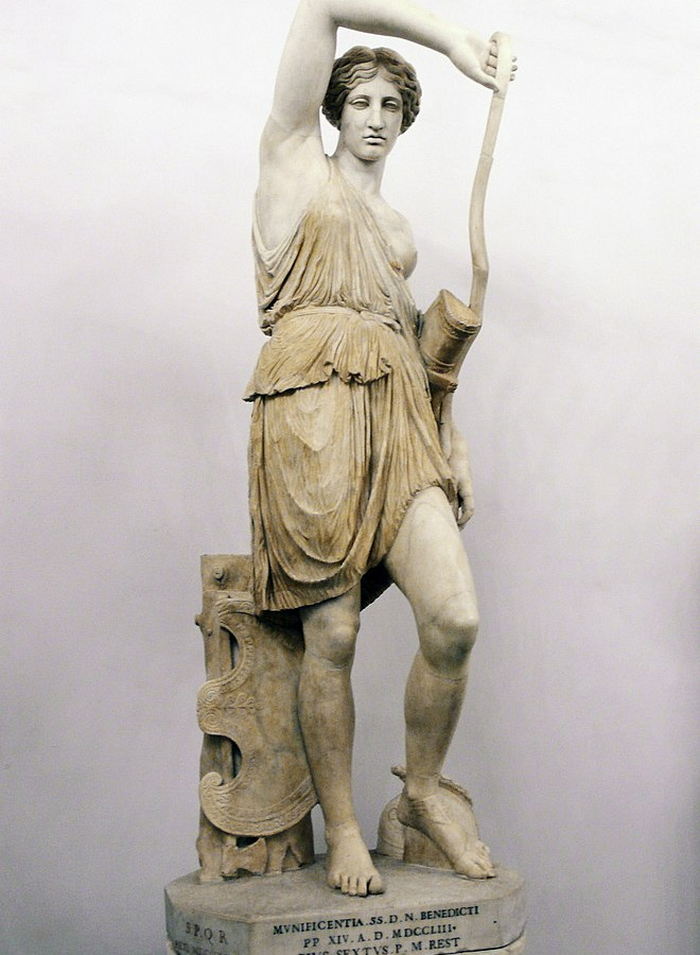In the heart of the Colosseum, under the blazing Roman sun, an unlikely figure steps onto the sandy arena. She’s not your average spectacle – she’s a gladiatrix. Today, we’re stepping back in time to uncover the thrilling history of female gladiators in Rome. These were the brave, fierce women who defied societal norms and fought for glory in the arenas.
The lives of these gladiatrices were steeped in mystery, intrigue, and drama. As we delve into this extraordinary aspect of Roman history, we’ll attempt to answer questions that have puzzled historians for centuries. What did female gladiators wear during their bloody battles? Who was the most famous female gladiator? Whose name was whispered with reverence and fear in the hushed conversations of ancient Rome?
This isn’t just a tale of blood and sand. It’s a story of women who dared to step into a world that was predominantly male! They took control of their destiny and fought with as much courage, skill, and resilience as their male counterparts.
However, these women gladiators weren’t just fighters; they were symbols of female strength and tenacity. They were the embodiment of the very essence of defiance, challenging gender norms and societal expectations. They didn’t just fight against other gladiators, but against the constraints of their society.
So let’s take a journey back in time. To when the roars of the crowd echoed through the Colosseum and the thrill of the fight was a matter of life and death. Let’s explore the fascinating world of the gladiatrices.
10 – Topless Costumes
In a refreshingly level-headed attitude towards sexual equality, it was decided by the Romans that men and women should fight in exactly the same way when in the arenas. As men fought with no shirt usually, this meant that women gladiatrices also had to fight as top half uncovered. Of course! As well as being practical for fighting, it also gave the battles an extra appeal for the men watching as audience. The only things they had in the arena when fighting were leg and arm protection as per the male gladiators along with a helmet, weapon and shield usually.
09 – Extra Entertainment
In some ways the gladiator shows were much like modern TV shows or movies. The producers of the them were always thinking of new ways to give the audience something extra. They always tried to stand out from the crowd. The introduction of gladiatrices was one of the results of this. Initially, they were introduced as an unusual sideshow to the main male action and to give the eager crowds a new thrill to watch. Much of their initial function was to provide light relief in the form of almost comic matches from the intense male battles. Many female fighters began fighting dwarfs to make the crowd laugh. Sometimes, they fought with small animals before moving onto competing with other women.

08 – Private Tuition
In ancient times, women did not always have the same freedoms as men in some aspects of life. In Roman times, this amounted to them not being allowed to attend the official gladiator camps to learn how to fight. Instead, it is believed that many of the female gladiatrices used their own money to hire personal tutors to prepare for their new career. It is thought that many would have been left money when their fathers died which they then would have used in this way.
07 – Classed As Prostitutes
One interesting note around female gladiators is how they were viewed by Roman society. Male gladiators were classed as heroes if they survived to earn their freedom. Not only were they given citizen status but also allowed to then marry or return to their families. This was not the same for women fighters! Female gladiators were seen as a disgrace by Roman society and actually classed in the same bracket as sex workers. This mainly came down to the fact they fought nearly naked and were seen as selling their bodies for entertainment. When they finished fighting, they were outcasts in society and were seen as off-limits for any Roman man to marry.
06 – Original Rebels
As the above shows, becoming a female gladiator was actually a very rebellious and daring thing to do. What is interesting is that this tended to happen after they finished fighting. The women who chose to fight of their own free will did so for the fame, wealth and celebrity that it brought them when at their peak. The wealth they would get if successful effectively freed them from being reliant on a husband or father which in itself was a real challenge to Roman society. When you add it all up, any women who became a gladiatrix was a really subversive presence to many ordinary Romans.
05 – Amazon and Achilla
One of the most famous records of female gladiators was found in Turkey. This was a key part of the Roman Empire and as such had amphitheaters there to hold contests. A plaque found at one showed two female fighters named Amazon and Achilla. It had been erected in homage to the fierce fight they had which ended in a draw and both winning prize money. Many believe that the draw was actually staged to tie in with an alternative, happier ending to the historical story of Achilles killing an Amazon warrior Queen that he loved by mistake in battle.
04 – Female Dolls As Souvenirs
The ancient Gladiator contests were wildly popular across the Roman Empire. And were like going to a modern-day football or NFL match (but with more killing!!). Many ordinary citizens loved going to the Colosseum or their local amphitheater to see their favourite fighters in action. Not missing a trick! The venues soon set up gift shops for the crowds to buy merchandise with the gladiators they liked best on. This also included the female fighter who also would have had toy dolls and statues in their honour in these gift shops.
03 – Roman Gladiatrix Grave
In 2000, archaeologists found the grave of a young woman near to the site of an old amphitheater in London. When they looked into the grave further, they found it to be filled with valuable trinkets and gladiator themed possessions. They also found remains of expensive food that they believed to have been eaten at a funeral feast in her honour. Adding it all together, they are certain the grave was one of a famous female gladiatrix who must have been well-known and well-loved.

02 – Gladiatrices Banned
As suddenly as women had been given permission to compete then it was taken away! In AD 200, Emperor Septimius Severus visited the Olympic Games in Greece and it was after this he banned all women from fighting as gladiators. But what happened in Greece that made him do this? Many think that he was influenced by the decision of the Greeks to ban women from entering the Olympics, which was in place at the time. It is also thought they had had become worried by the effect of women choosing to fight as a career. Additionally, how this was affecting the views around marriage in Roman society.
01 – Female Slaves Given Bad Deal
Many of the women we have described above were free citizens who chose to fight of their own free will. However, as with men, there were also slaves who had been captured by Roman forces and were forced to fight. Female slaves were treated as badly as male ones. Emperor Nero liked to make them hunt wild animals in the arena with only a small pocket knife to defend themselves! The Emperor Domitian preferred to make them fight to the death at night-time with only the barest of illumination to allow them to see the other fighters. All this made it pretty bad to be a female slave forced to fight!
Conclusion
Here is it. A little exploration of the female gladiators of Rome. It’s important to remember that their stories are more than just exciting tales from the ancient world. They’re a testament to the indomitable spirit of women, who dared to defy conventions and make a name for themselves in an arena dominated by men.
The gladiatrices were more than just fighters; they were symbols of power and resilience. Their names, like their battles, echo through time, reminding us of the strength and courage of women in the face of adversity.
The legacy of the gladiatrix lives on! Not just in the facts we’ve shared but in the very concept of the female warrior. Their existence has shaped our understanding of the role of women in history and continues to inspire us today.
So, the next time you hear the term gladiator, remember the gladiatrices. Remember the famous female gladiators who graced the sands of the Colosseum with their strength and courage. Remember their stories, their fights, and most importantly, their spirit.
In the grand scheme of things, the gladiatrices remind us that history is not just the story of the victors. But also of those who dared to break the mold and challenge the status quo. It’s the story of those who dared to be different, who dared to fight, and who dared to be remembered.


